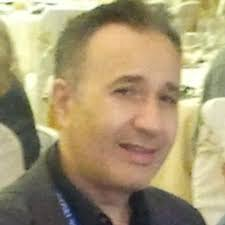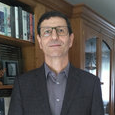Editorial Board Members' Collection Series: Nonlinear Photonics
A special issue of Photonics (ISSN 2304-6732). This special issue belongs to the section "Optical Interaction Science".
Deadline for manuscript submissions: 31 July 2024 | Viewed by 6131
Special Issue Editors
Interests: nonlinear optics; ultrafast optics; photonic devices
Special Issues, Collections and Topics in MDPI journals
Interests: nonlinear photonics; nonlinear optics; fiber lasers; nonlinear fiber optics
2. Hangzhou Institute of Advanced Study, University of Chinese Academy of Sciences, Hangzhou 310024, China
Interests: precision laser technology; nonlinear optics; quantum technology; astrophotonics
Special Issues, Collections and Topics in MDPI journals
Special Issue Information
Dear Colleagues,
The field of nonlinear guided optics in optical fibers or waveguides is a field of intense investigations, intimately connected to the realization of optical fibers and waveguides with specific properties.
This Special Issue aims to review the current state of the art and present perspectives of further development. Submissions on fundamental and applicative aspects of the field will be considered. Topics include, but are not limited to, the following:
- Fundamental nonlinear processes
- wavelength conversion, harmonic generation and frequency mixing
- parametric processes, active and dissipative effects
- raman and brillouin scattering
- frequency combs
- supercontinuum physics
- temporal and spatiotemporal effects, instabilities and chaos
- nonlinear optics with singular beams
- optical soliton physics
- nonlinear pulse propagation in optical fibers
- ultrafast nonlinear optics
- nonlinear interactions and non-classical light
- quantum nonlinear photonics
- Nonlinear materials and structures
- inorganic (e.g. glasses, glass-ceramics, crystals), organic nonlinear materials
- nonlinear effects in microstructures and, microcavities.
- optical nonlinearities in nanocavities and nanostructures
- optical nonlinearities in poled and high dielectric constant materials
- nonlinear optical effects in semiconductors and 2D materials.
- Nonlinear optical devices, systems and applications
- all-optical photonic devices
- chip-scale nonlinear photonic devices
- parametric oscillators and amplifiers, parametric sources of quantum light
- guided-wave nonlinear devices
- nonlinear photonic crystal and metamaterial devices
- nonlinear plasmonic and nanoplasmonic devices
- nonlinear detectors
- saturable absorption, mode-locking and Q-switching in fiber lasers
- nonlinear optics in single-mode passive optical fiber resonators
- nonlinear dynamics in rare-earth-doped single-mode fiber lasers
- soliton dynamics in rare-earth doped single-mode fiber lasers
Dr. Luigi Sirleto
Prof. Dr. François Sanchez
Prof. Dr. Yan Feng
Guest Editors
Manuscript Submission Information
Manuscripts should be submitted online at www.mdpi.com by registering and logging in to this website. Once you are registered, click here to go to the submission form. Manuscripts can be submitted until the deadline. All submissions that pass pre-check are peer-reviewed. Accepted papers will be published continuously in the journal (as soon as accepted) and will be listed together on the special issue website. Research articles, review articles as well as short communications are invited. For planned papers, a title and short abstract (about 100 words) can be sent to the Editorial Office for announcement on this website.
Submitted manuscripts should not have been published previously, nor be under consideration for publication elsewhere (except conference proceedings papers). All manuscripts are thoroughly refereed through a single-blind peer-review process. A guide for authors and other relevant information for submission of manuscripts is available on the Instructions for Authors page. Photonics is an international peer-reviewed open access monthly journal published by MDPI.
Please visit the Instructions for Authors page before submitting a manuscript. The Article Processing Charge (APC) for publication in this open access journal is 2400 CHF (Swiss Francs). Submitted papers should be well formatted and use good English. Authors may use MDPI's English editing service prior to publication or during author revisions.
Keywords
- nonlinear optics
- nonlinear photonics
- nonlinear optical materials
- optical harmonics generation
- stimulated scattering
- optical solitons
- controlling light with light, nonlinear guided-wave photonics
- nonlinear spectroscopy and microscopymicroring nonlinear resonators
- nonlinear fiber resonator
- single-mode fiber laser
- soliton







